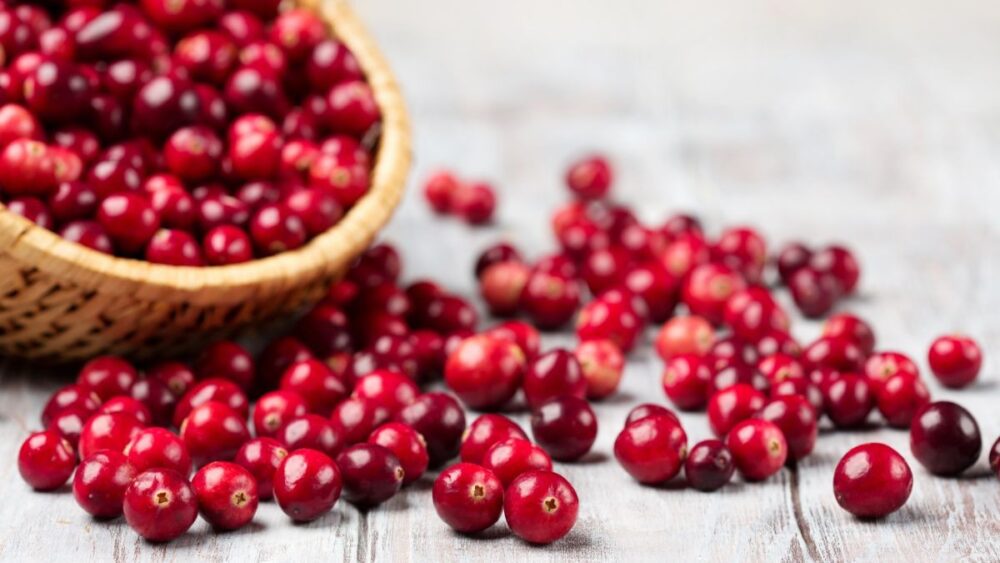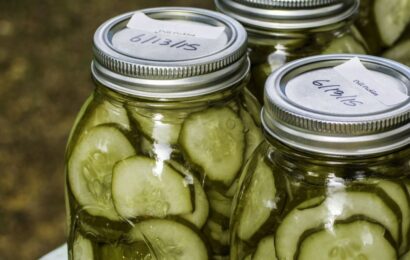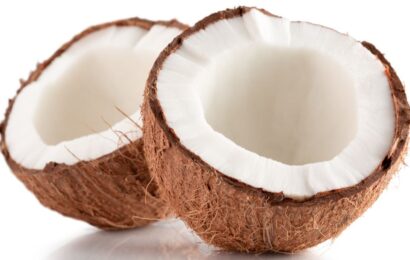As autumn approaches, those familiar deep red berries make their appearance in grocery stores across the U.S. Yes, cranberry season is here! Eaten in their natural state, cranberries are sometimes shockingly tart — this is the main reason that cranberries are sweetened and cooked or dried. Many people enjoy cranberry juice or cranberry sauce at Thanksgiving. Others use sweetened, dried cranberries as a snack or in baking treats such as cranberry bread or muffins. Are cranberries healthy or just a sugary seasonal delicacy?
Cranberry history
According to the website cranberries.org from the Cape Cod Cranberry Growers’ Association, glaciers carved out what we now know as cranberry bogs tens of thousands of years ago. These cranberry bogs are found across Cape Cod, Martha’s Vineyard, Nantucket, and the South Shore of Massachusetts.
The Wampanoag People have enjoyed wild cranberries, or sasumuneash, for 12,000 years, fresh or dried. Medicine men used cranberries in traditional healing rituals. In 1816, Captain Henry Hall, a Revolutionary War veteran from Dennis, Massachusetts, came across a cranberry vine growing in some sand and became the first person to cultivate cranberries. Nearby landowners soon began to convert swamps and wetlands into bogs and the cranberry industry took off. Years later, in 1912, a lawyer named Marcus L. Urann bought a cranberry bog and began to can cranberries, forming a cranberry cooperative that became the infamous Ocean Spray company. And by 1940, the beloved jellied canned cranberry sauce had arrived (that’s still loved to this day).
To get cutting-edge diabetes news, strategies for blood glucose management, nutrition tips, healthy recipes, and more delivered straight to your inbox, sign up for our free newsletters!
Cranberry health benefits
Its deep red, rich color is a site to behold on a Thanksgiving dinner table, but the cranberry’s beauty is more than skin deep. Cranberries hold a number of health benefits, and the 2015-2020 Dietary Guidelines for Americans recognized cranberries as being a nutrient-dense fruit. Here’s a look at what they offer.
Promoting urinary tract health.
Cranberries in the form of cranberry juice have been commonly used as a remedy to prevent urinary tract infections (UTIs). It’s thought that cranberries contain A-type proanthocyanidins (PACs) that can prevent bacteria from sticking to the bladder wall. However, studies are mixed, and health experts believe that cranberry juice may be somewhat helpful in preventing frequent UTIs, but cranberry juice does not treat a UTI.
Reducing inflammation.
Cranberries may help lower the risk of heart disease by lowering systolic blood pressure, improving levels of HDL (“good”) cholesterol, reducing body-mass index (BMI), and even improving blood sugar levels, thanks to their anti-inflammatory properties. Cranberries contain high amounts of antioxidants that may reduce inflammation and lower the risk of some chronic diseases.
Supporting digestive health.
According to The Cranberry Institute of Carver, MA, cranberries’ PACs “help decrease bacterial adhesion to maintain healthy gut bacteria and help prevent H. pylori, a major cause of gastric ulcers.”
Fighting tooth decay.
Polyphenols in both cranberries and blueberries can protect teeth against bacteria responsible for causing tooth decay by preventing bacteria from sticking to teeth and gums. And, the polyphenols in cranberries stay in the saliva, even after they’re swallowed.
Cranberry nutrition
Important nutrients found in cranberries include fiber, vitamin C, vitamin E, and antioxidants. Cranberries in their natural or raw state provide the most health benefits. But because eating raw cranberries or drinking pure cranberry juice isn’t the most appealing, most people eat cranberries or drink cranberry juice with added sugar to help offset that tart taste.
Here’s the nutrition breakdown of some popular cranberry products
1 cup raw cranberries:
- 51 calories
- 13 grams (g) of carbohydrate
- 5.1 g of fiber
- 2 milligrams (mg) of sodium
8 ounces unsweetened cranberry juice:
- 60 calories
- 18 g of carbohydrate
- 15 mg of sodium
8 ounces sweetened cranberry juice cocktail:
- 110 calories
- 28 g of carbohydrate
- 5 mg of sodium
8 ounces diet cranberry juice drink:
- 5 calories
- 2 g of carbohydrate
- 40 mg of sodium
1/4 cup unsweetened dried cranberries:
- 85 calories
- 23 g of carbohydrate
- 1.5 g of fiber
- 0 mg of sodium
1/4 cup Ocean Spray Craisins (dried cranberries):
- 130 calories
- 33 g of carbohydrate, including 26 g of added sugars
- 3 g of fiber
- 0 mg of sodium
1/4 cup Ocean Spray Craisins (dried cranberries), 50% less sugar:
- 100 calories
- 33 g of carbohydrate, including 8 g of added sugars
- 10 g of fiber
- 0 mg of sodium
1/4 cup jellied cranberry sauce:
- 110 calories
- 28 g of carbohydrate (including 24 g of added sugars)
- 1 g of fiber
- 10 mg of sodium
You can see that the calories and carbohydrate in many cranberry-based products jump once sugar is added. If you have diabetes, you know that the high carb content of these products won’t do your blood sugar many favors — unless your blood sugar is too low (hint: sweetened cranberry juice is a good treatment for hypoglycemia).
Healthier ways to enjoy cranberries
Cranberries have a lot to offer, but be careful how you choose to fit them into your eating plan to avoid excess calories and carbs. Here are a few tips that might help:
- Add a small handful of unsweetened dried cranberries to your morning oatmeal or yogurt.
- Pulse or blend some raw cranberries into a relish or add them to a smoothie.
- Slice raw cranberries into a salad.
- Dilute unsweetened cranberry juice with seltzer water for a juice spritzer.
Go ahead and indulge in a bit of jellied cranberry sauce, if that’s one of your holiday passions. Swap it out for another higher-carb food to help keep your blood sugars in line.
Finally, check with your health care provider if you are thinking about taking a cranberry supplement, and go easy with the amount of cranberry juice that you drink, since cranberries have high levels of oxalates, which can increase the risk of kidney stones in some people. Also, check with your provider about a safe use of cranberry products if you take blood thinner medicines such as warfarin or aspirin.
Want to learn more about eating well? Read “Strategies for Healthy Eating,” “Improving Your Recipes: One Step at a Time,” and “Easy Ways to Eat Better.”





